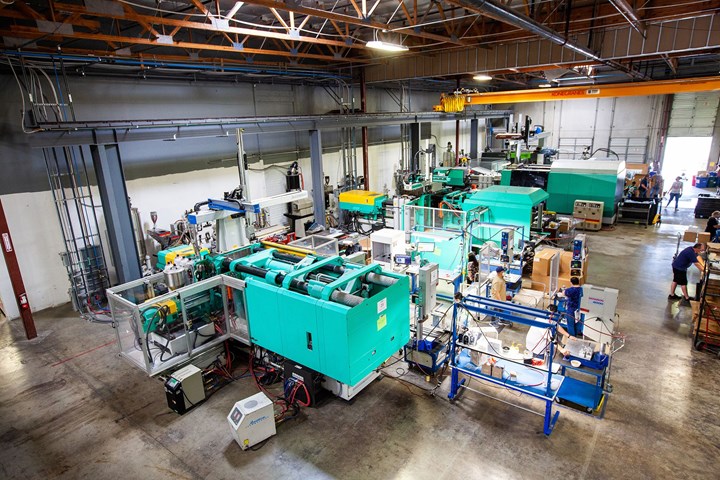Cascadia Custom Molding Acquired by Private Equity Firm
Blue Point Capital Partners portfolio company, VRC Engineered Solutions, has acquired the custom injection molder with facilities in Idaho and Washington.
Blue Point Capital Partners and its portfolio company, VRC Engineered Solutions, has acquired Cascadia Custom Molding. VRC Engineered Solutions is composed of Milwaukee-based plastics and rubber molder Ritus Corp, and its sister companies Vanseal Corp. and Classic Molding. Ritus was acquired by Blue Point in August 2019. Cascadia is VRC’s first acquisition.
In business for more than 40 years, Cascadia molds thermoplastic components for a variety of markets, including medical, aerospace and consumer goods. Cascadia has manufacturing facilities in Coeur d’Alene, Idaho, and Woodinville, Wash. In a release, Blue Point said the deal will mark the next phase of growth for both VRC and Cascadia, expanding geographic reach and end-market participation.
Among its five facilities—three in Wisconsin and two in Illinois—Ritus brings more than 350,000-ft2 of manufacturing space to VRC. It has more than 200 rubber and plastic molding machines, ranging from 10 to 500 tons. Cascadia has 45 injection molding machines, ranging in clamp force from 18 to 1450 tons, including a 2-shot 550-ton press. Cascadia was formed in May 2016, when Accurate Molded Plastics acquired Mold-Rite Inc.

Cascadia’s injection molding machine fleet includes the 2K machine in the foreground of this picture of its Woodinville, Wash. site.
Related Content
-
Back to Basics on Mold Venting (Part 1)
Here’s what you need to know to improve the quality of your parts and to protect your molds.
-
Process Monitoring or Production Monitoring—Why Not Both?
Molders looking to both monitor an injection molding process effectively and manage production can definitely do both with tools available today, but the question is how best to tackle these twin challenges.
-
Using Data to Pinpoint Cosmetic Defect Causes in Injection Molded Parts
Taking a step back and identifying the root cause of a cosmetic flaw can help molders focus on what corrective actions need to be taken.












